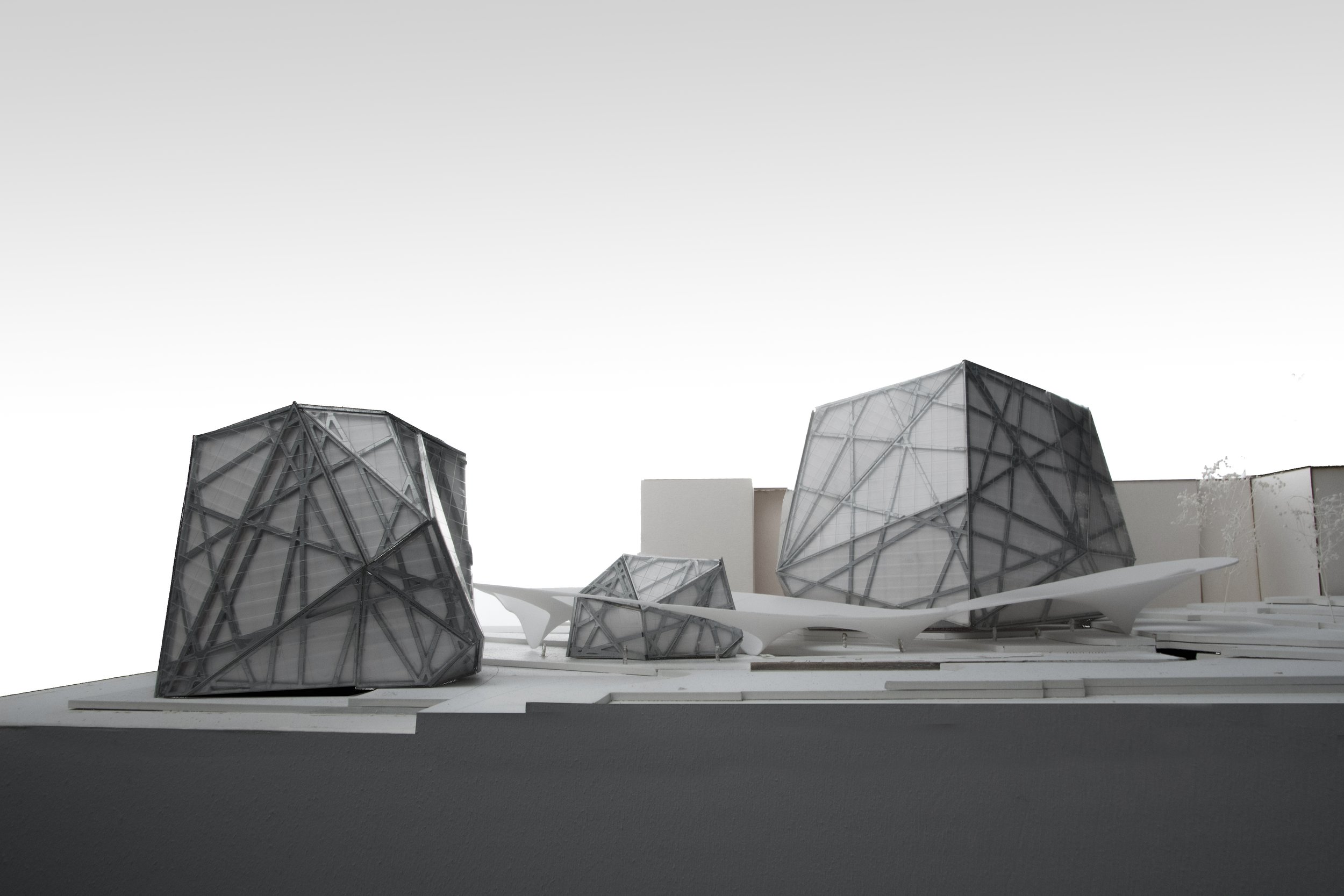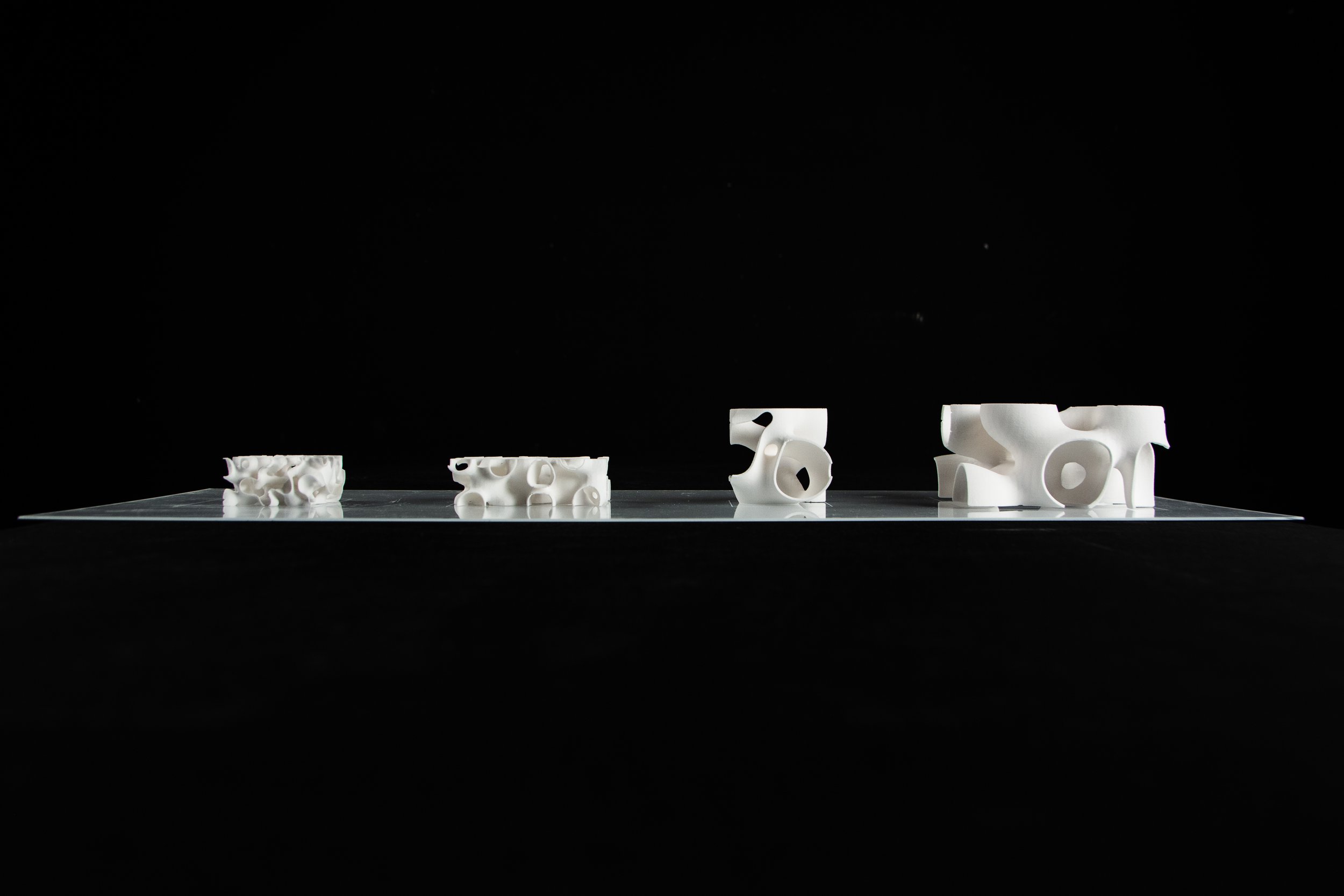
Oswald Site Acoustic Analysis | University Park, PA
Turn Up The Volume
Course: Arch 497 - Atmospheres: Perception, Design and Fabrication/Fall 2019 (4 weeks)
Location: University Park
Professor: Yasmine Abbas
Software: Rhino, Grasshopper
Materials: Plaster, Acrylic
Team Project w/ Brendan Burke
Bachelor of Architecture (Professional Degree) | Pennsylvania State University
Spaces and environments we inhabit are all processed by the senses. Sound in particular can have an enormous impact on ones perception and comfort in the space. Our team was tasked with understanding how sound affected the Oswald Site at the University Park Campus for Assistant Professor of Architecture Yasmine Abbas’s Special Topics course, Atmospheres: Perception, Design and Fabrication, produced in fall 2018; as well as excerpt production (assignment designed in relation to the course on Atmospheres) from the fourth-year design studio co-taught with Professor Nathaniel Belcher (fall 2018).
We analyzed and quantified sound levels and qualities at the site. Using that data, sound was visualized using parametric software to create auditory maps for the site and then expressed using gyroid minimal surfaces at various densities.
These works served as the inspiration and starting point for the Oswald Education Complex Project (Diamonds & The Rough).
Gallery Exhibition:
PLUG IN TURN ON
February 7 - March 31, 2018 | Robeson Gallery
Project Development and Documentation

Gyroid Minimal Surface Models (1-4) explored the practical implications of auditory data collected from the site.
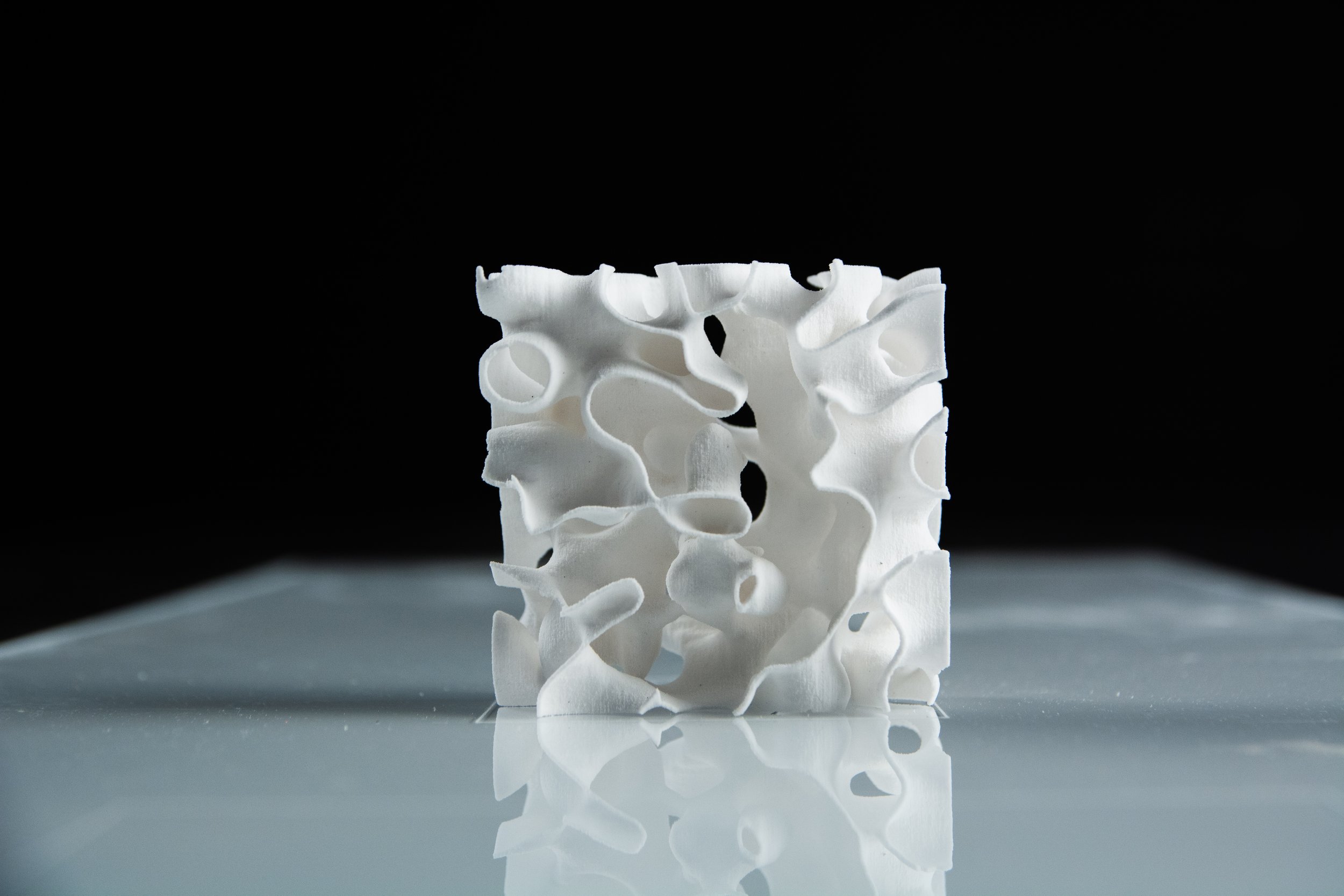
Turn Up the Volume #1, 2018
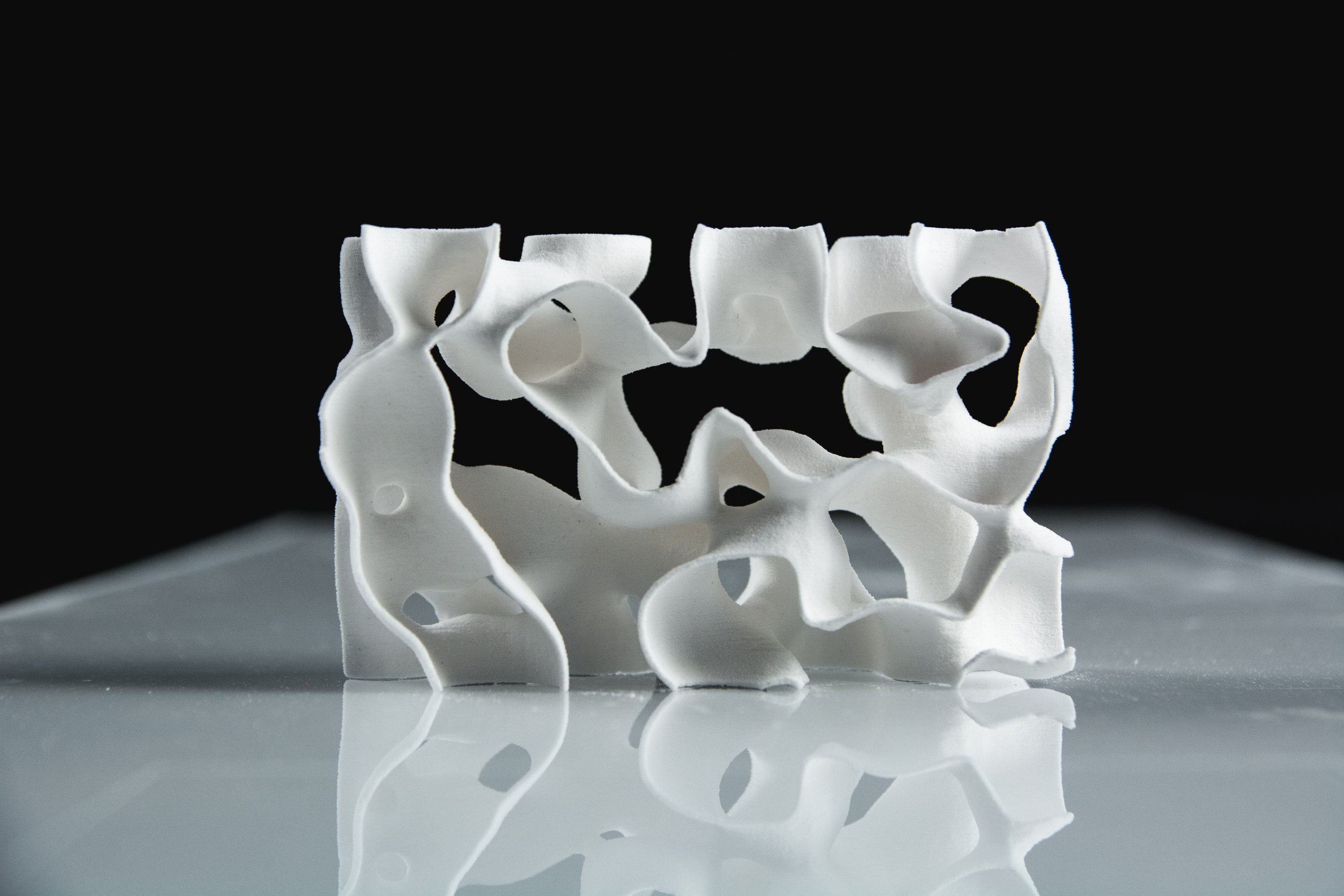
Turn Up the Volume #2, 2018
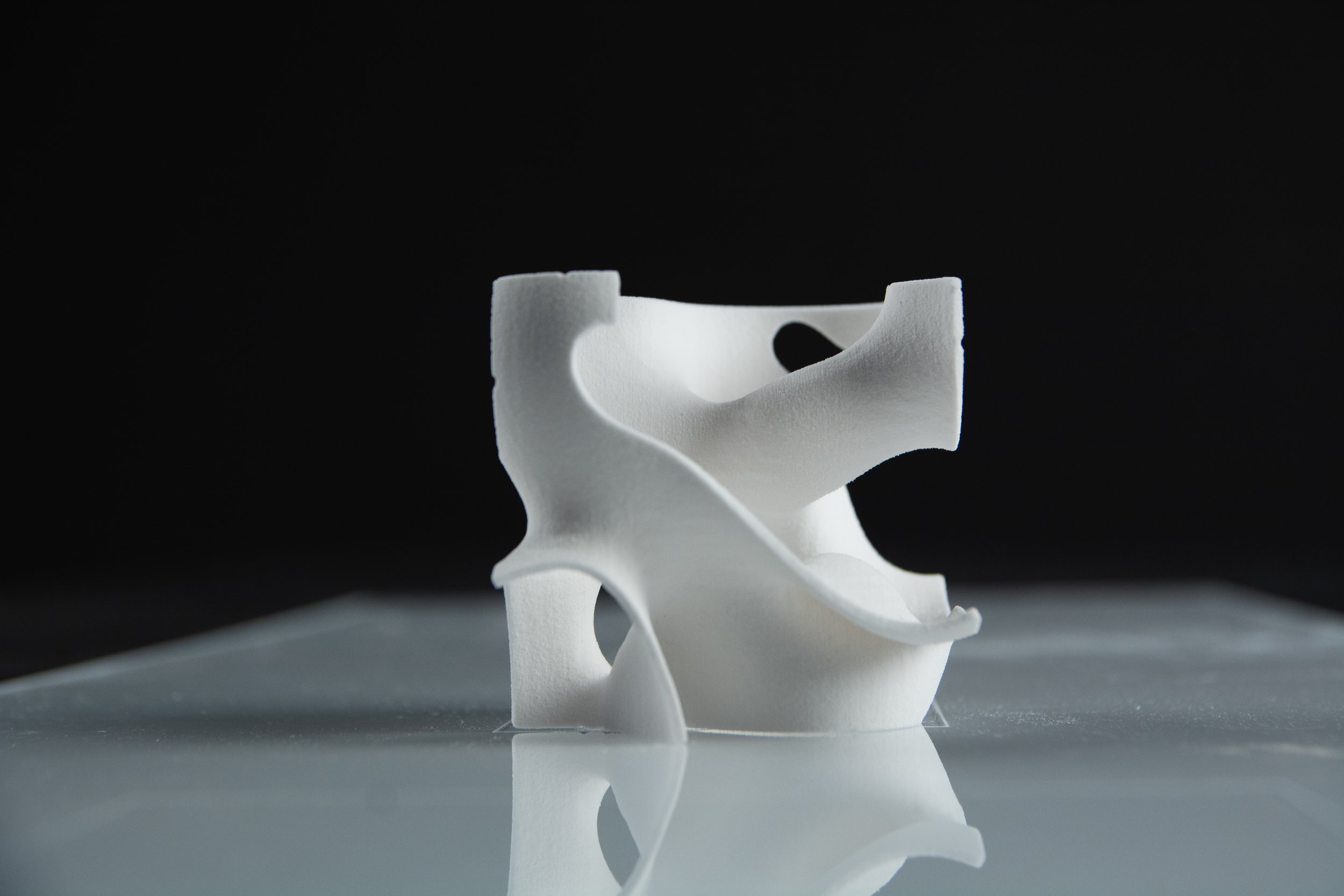
Turn Up the Volume #3, 2018
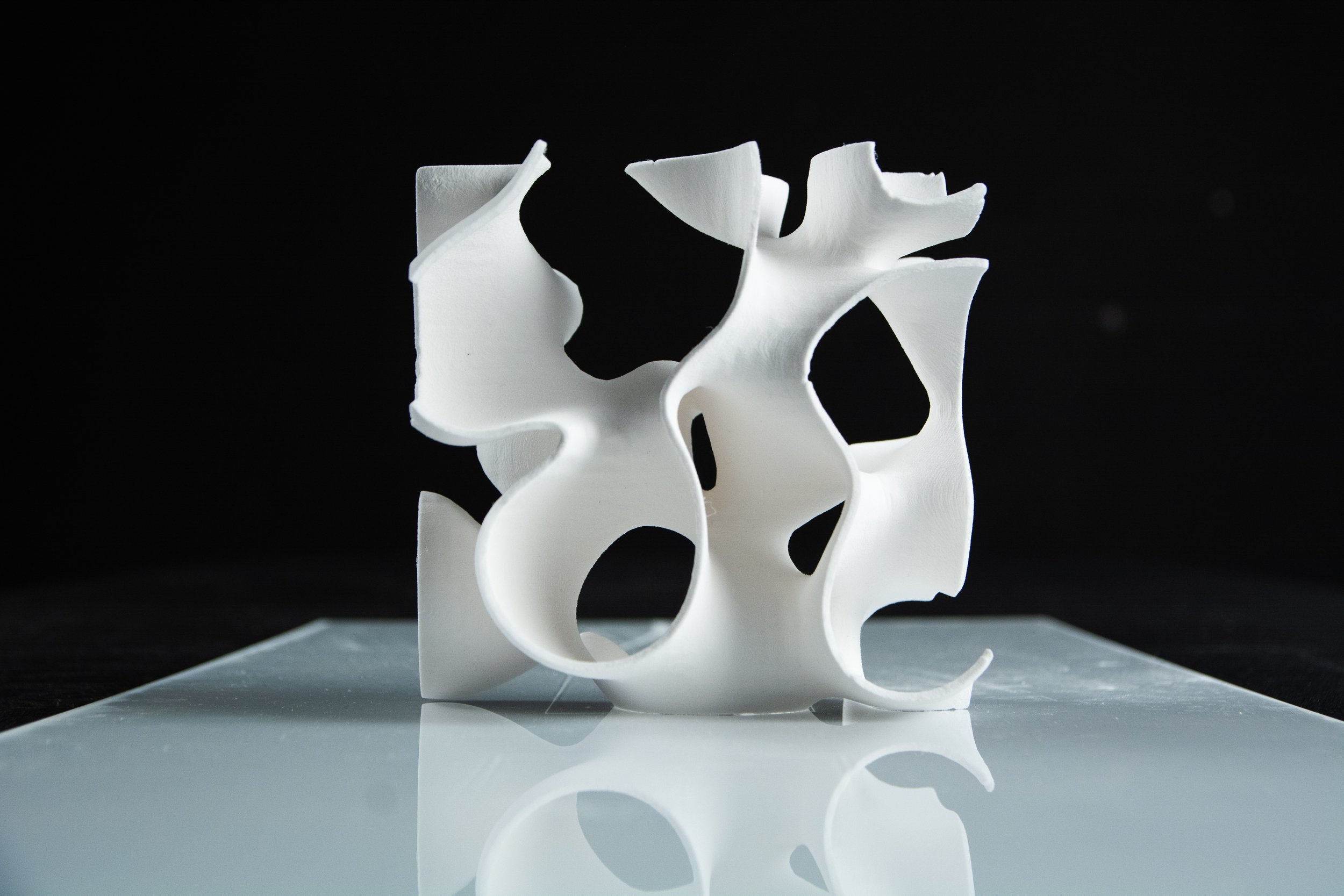
Turn Up the Volume #4, 2018
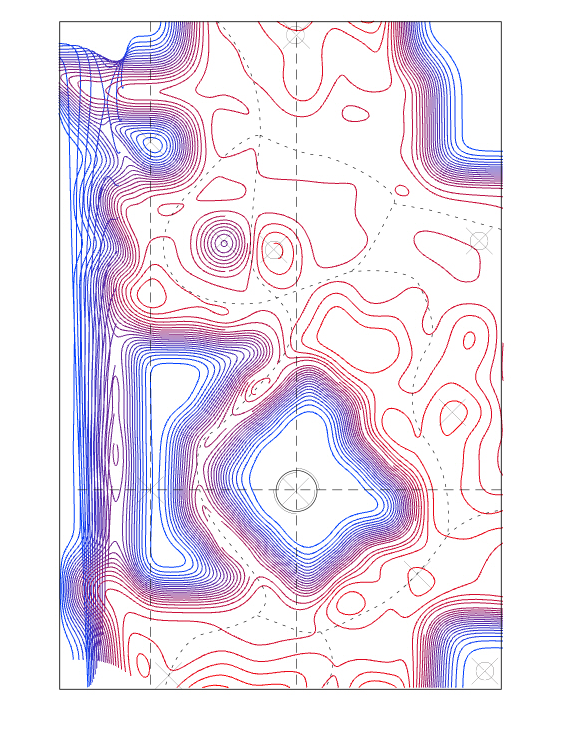
Site Plan of acoustic levels at the Oswald Site. Sound levels were recorded at 3' intervals across the site. Data was plotted, overlaid on the site, and extracted to create a height map of the sound levels on the site. Valleys (blue) show areas of low decibel levels, peaks (red) show high decibel levels.

Axonometric of acoustic levels at the Oswald Site. Sound levels were recorded at 3' intervals across the site. Data was plotted, overlaid on the site, and extracted to create a height map of the sound levels on the site. Valleys (blue) show areas of low decibel levels, peaks (red) show high decibel levels.
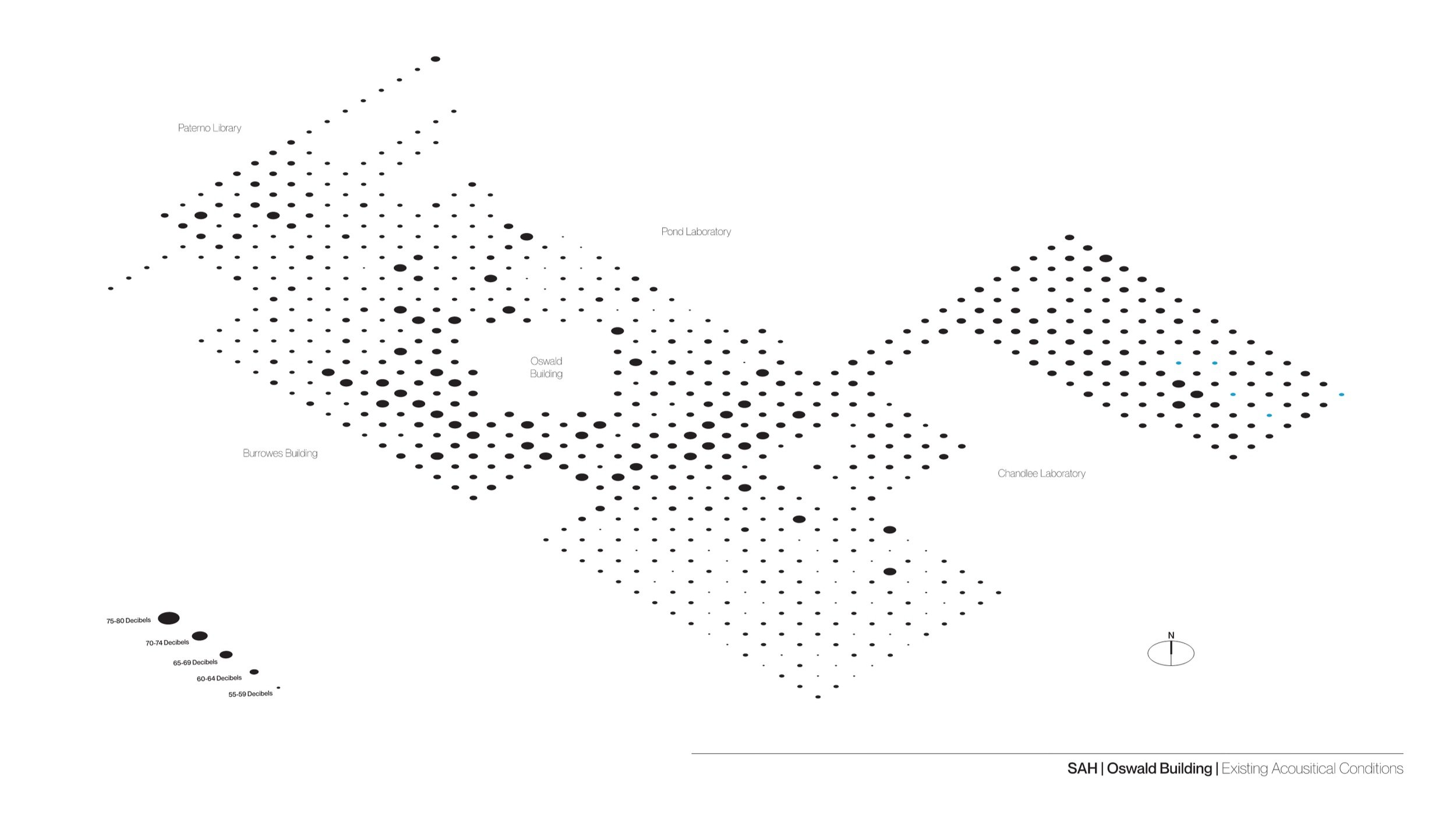
Existing Acoustic Conditions | Sound Levels | Overall sound levels are highest at the pedestrian paths that work through the site. Additional sources include mechanical handling units at nearby buildings. The result is a site that is somewhat pleasant and calm, but with notable disturbances during high-traffic periods and with ever-present white noise. Given the significant greenspace at the site, interventions should lessen the perceived nuisance noises.
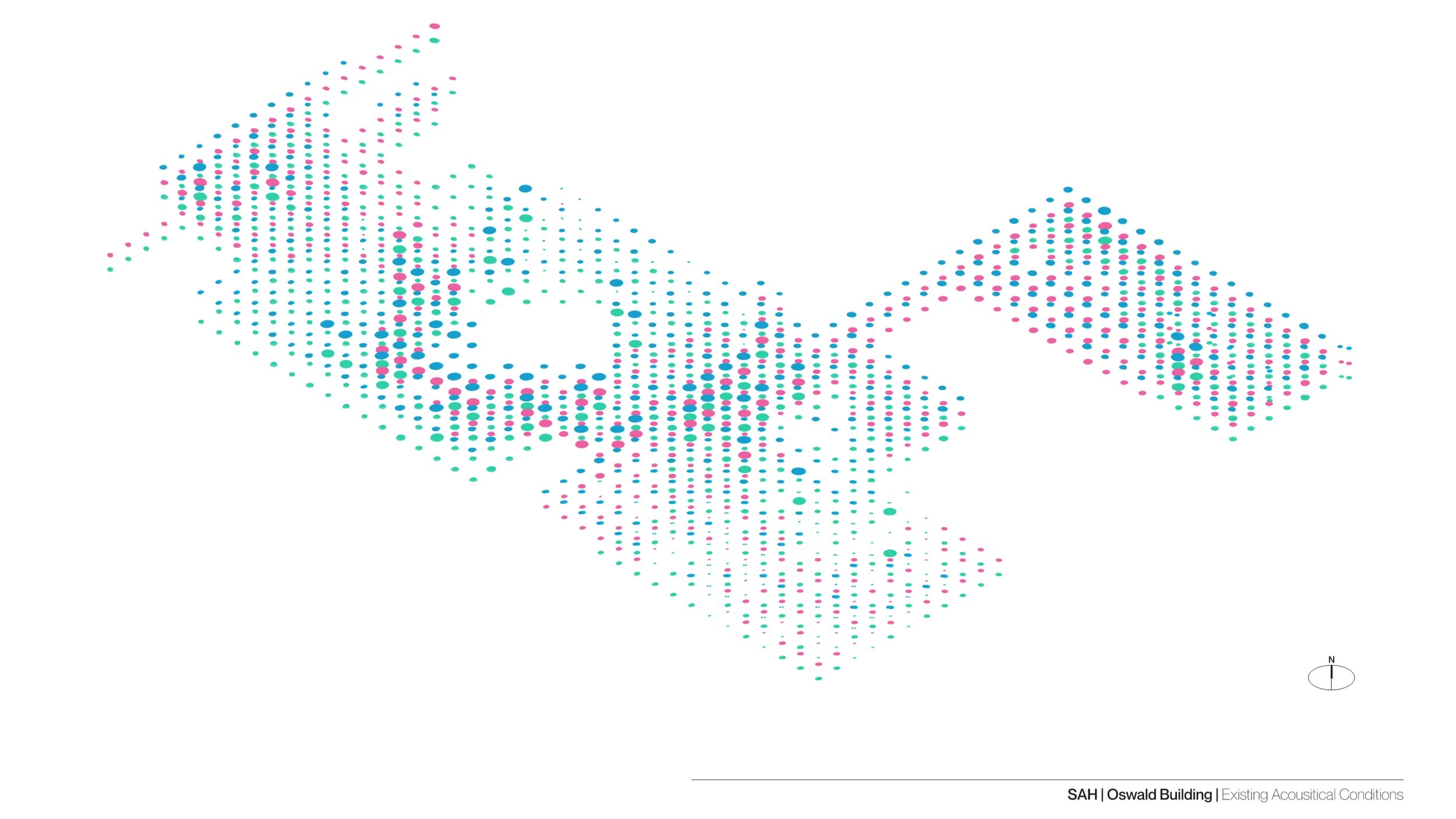
Existing Acoustic Conditions | Superimposed Conditions | Overall sound levels are highest at the pedestrian paths that work through the site. Additional sources include mechanical handling units at nearby buildings. The result is a site that is somewhat pleasant and calm, but with notable disturbances during high-traffic periods and with ever-present white noise. Given the significant greenspace at the site, interventions should lessen the perceived nuisance noises.

Existing Acoustic Conditions | Mechanical | While the site is not overly loud, it is far from quiet. The buildings flanking the northeast and southwest ends of the site trap sound that enters the courtyard. Mechanical equipment and exhaust vents on the Oswald and Chandlee buildings account for the vast majority of noise in the area. Surprisingly pedestrian noise had a relatively low impact on the cumulative noise levels.
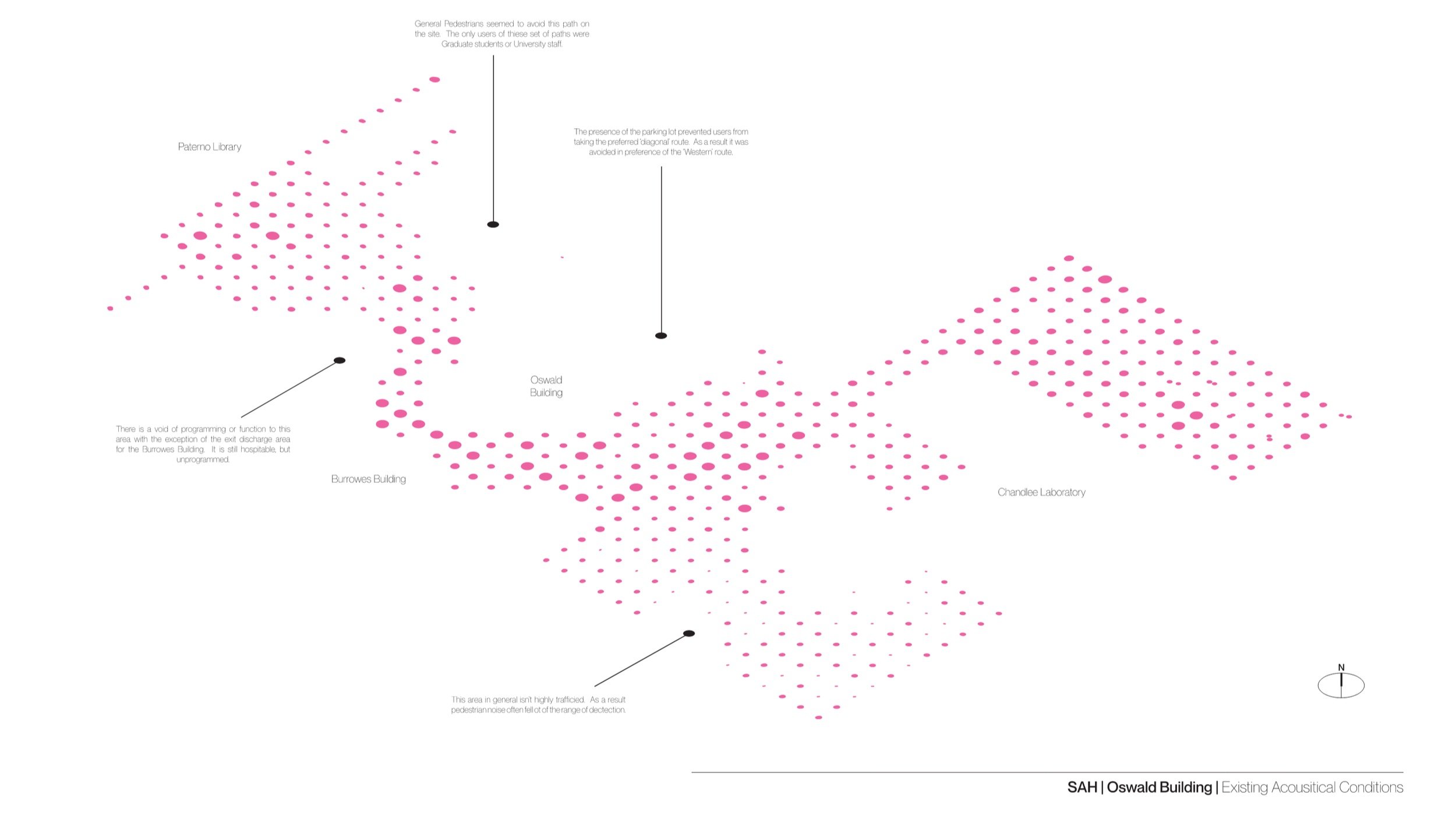
Existing Acoustic Conditions | Pedestrian| Pedestrians make up the vast majority of human introduced noise on campus, however there was a notable difference in the expected vs observed behavior. Pedestrians were rather quiet, even during peak traffic periods, primarily due to mobile device preoccupation. In terms of the graph, pedestrian noise was confied to the vectors of travel, which become pronounced in the data, Even so, large volumes of pedestrians had a minimal impact on overall volume.
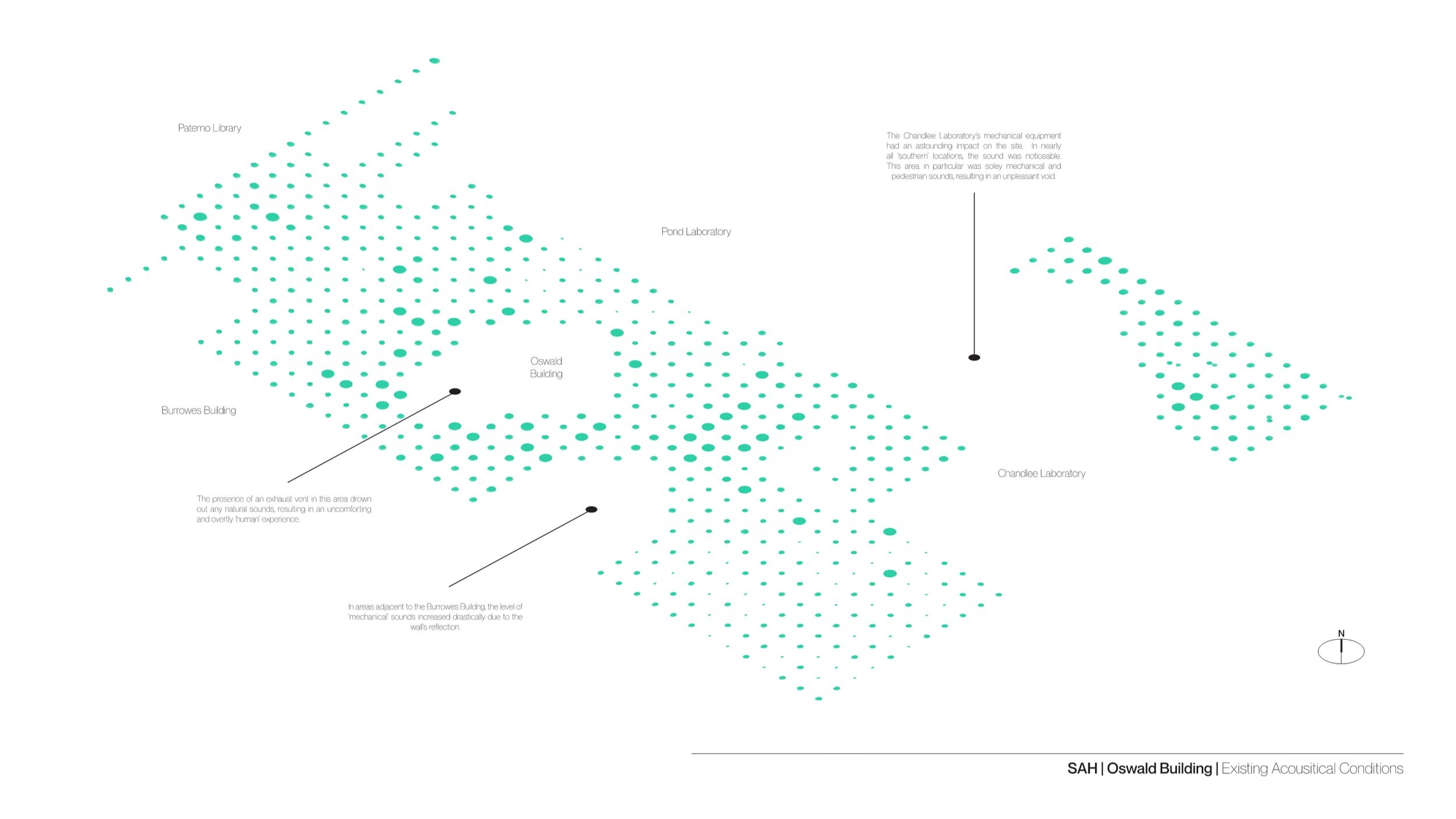
Existing Acoustic Conditions | Natural Conditions | Natural sounds were concentrated around the foliage and clusters of trees. These were primarily focused around the ‘northern’ and ‘southern’ ends of the site, near the Paterno library and Old Botany, respectively. Circled areas contain little or no natural sounds, and resulted in rather a ‘cold’ and inhumane aura. Notably, these areas were far from greenery, with the exception of the South Burrowes Building condition.



